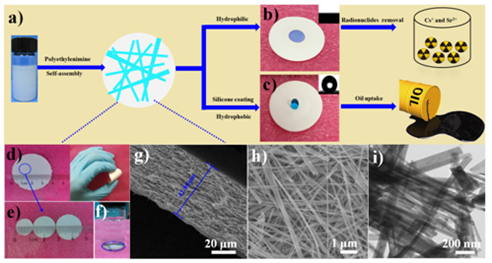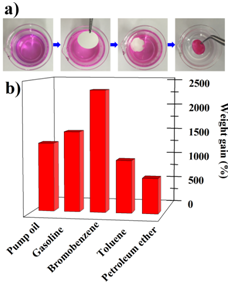
count: [2016-03-15] [Close]
Recently, scientists from ASIPP Plasma Application Division developed multifunctional flexible free-standing membrane and applied it in radioactive ions Sr2+ and Cs+ tainted water treatment. The modified membrane can also be applied to oil uptake when coated with a thin layer of hydrophobic molecules. These findings might open up a simple, low-cost route toward water treatment and separation technologies.
In recent years, frequent oil spills and nuclear reactor accidents, whose pollution is difficult to be cleaned up, have caused severe damage to the environment and ecosystems. To treat the tainted water, scientists in ASIPP constructed a shape-moldable and nanoporous membrane based on the layer-by-layer (LbL) assembly of titanate nanobelt (TNB) and polyethylenimine (PEI), which is found exceptionally capable in the preconcentration and removal of radioactive ions Sr2+ and Cs+. The result showed that the exchange of Cs+ and Sr2+ ions occurs within the (003) planes of titanate nanobelts.
Furthermore, the membrane is coated with a thin layer of hydrophobic molecules (volatile silicone), resulting in a superhydrophobic surface, as evidenced by its high water contact angle (150.58o). The engineered multilayer membrane is exceptionally capable in selectively and rapidly adsorbing oils up to 23 times the adsorbent weight. (Wen Tao reports)

Characterization of sodium titanate nanobelt (Na-TNB) membrane

Absorption efficiency of modified TNB membrane for oils and organic liquids
(The gasoline was labeled with Rhodamine B for clear presentation)